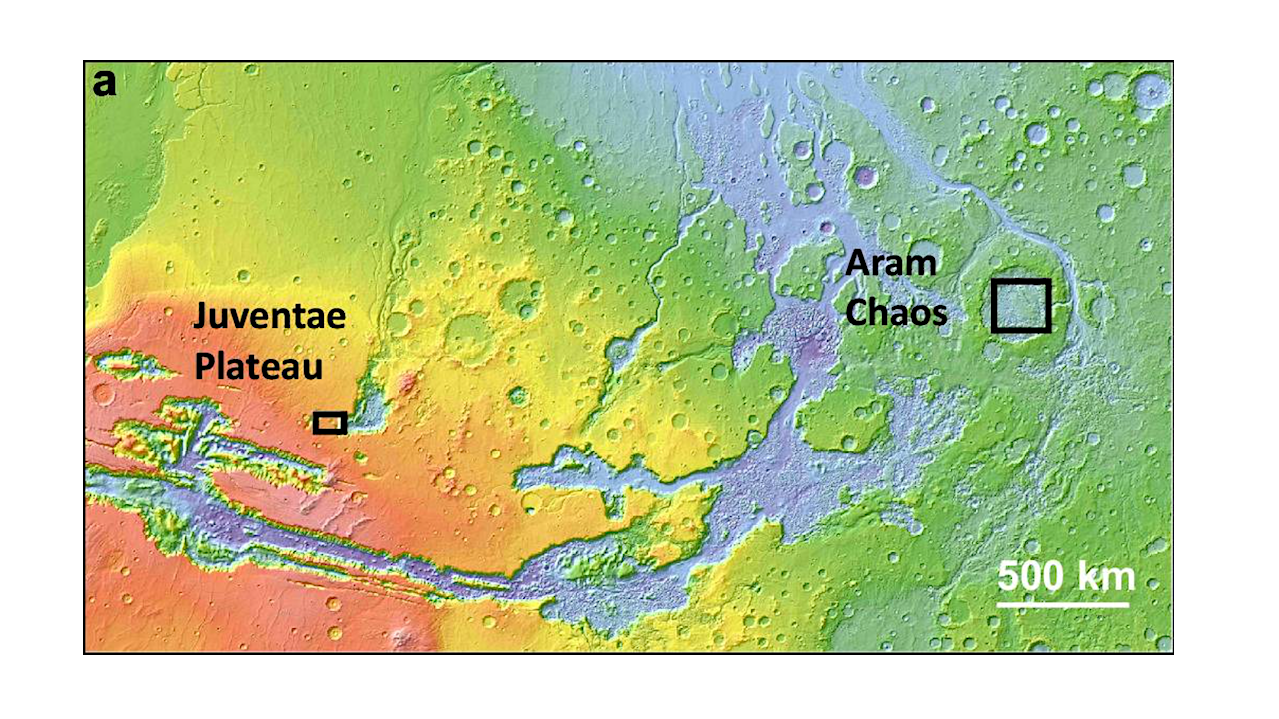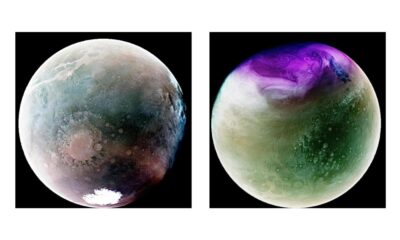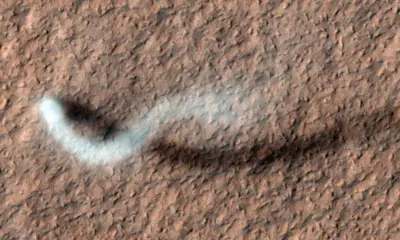Science
Scientists Uncover Unique Ferric Hydroxysulfate on Mars

Significant advancements have been made in understanding the geochemical environment of Mars with the identification of a unique mineral, ferric hydroxysulfate (Fe3+SO4OH). This discovery marks a notable addition to the existing knowledge of sulfate minerals present on the Martian surface, which are critical for deciphering the planet’s geological history.
Ferric hydroxysulfate has captured the attention of scientists for over a decade due to its distinctive spectral features that do not correspond to any previously documented minerals. Its presence has been notably observed in layered sedimentary rocks at key Martian sites, particularly in the regions known as Aram Chaos and the plateau above Juventae Chasma. The implications of this mineral’s formation are significant, as they shed light on past geochemical processes on Mars.
Research indicates that crystalline ferric hydroxysulfate is produced by heating hydrous ferrous sulfates to temperatures of 100 °C or higher. This mineral exhibits a strong spectral band at 2.236 μm, aligning with the spectral characteristics detected on Mars. At the identified locations, hydrated sulfates are believed to have formed through evaporative processes, or low-temperature alterations, revealing a complex interplay of environmental factors.
In contrast, the formation of ferric hydroxysulfate suggests a different process. It is hypothesized that this mineral is consistent with the heating and oxidation of hydrated ferrous sulfates, potentially resulting from volcanic activity, ash deposition, or hydrothermal processes. These findings underscore the dynamic nature of Mars’ geological history and the various processes that may have shaped its surface over time.
The research was published in the journal Nature, providing a comprehensive analysis of the mineral’s characteristics and its implications for Martian geochemistry. The study maps the equatorial regions of Mars using data from the Mars Orbital Laser Altimeter (MOLA), identifying critical locations, including the Juventae Plateau and Aram Chaos. The mapping highlights the contrasting elevations across the Martian surface, with areas of higher elevation marked in red and lower elevations in blue.
Further imaging from the CRISM (Compact Reconnaissance Imaging Spectrometer for Mars) has clarified the compositional units present in these regions. The analysis reveals pyroxene-bearing basalt and polyhydrated sulfates, alongside the newly identified ferric hydroxysulfate phase, which is highlighted in red on the maps.
These findings represent a step forward in the exploration of Mars, providing insights into its past environments and the potential for understanding the planet’s habitability. As scientists continue to analyze the unique features of Martian minerals, the quest for understanding the planet’s geochemical history remains a priority, with ferric hydroxysulfate serving as a key component in unraveling this complex narrative.
-

 Technology5 months ago
Technology5 months agoDiscover the Top 10 Calorie Counting Apps of 2025
-

 Technology3 weeks ago
Technology3 weeks agoOpenAI to Implement Age Verification for ChatGPT by December 2025
-

 Health3 months ago
Health3 months agoBella Hadid Shares Health Update After Treatment for Lyme Disease
-

 Health4 months ago
Health4 months agoAnalysts Project Stronger Growth for Apple’s iPhone 17 Lineup
-

 Health4 months ago
Health4 months agoErin Bates Shares Recovery Update Following Sepsis Complications
-

 Technology5 months ago
Technology5 months agoDiscover How to Reverse Image Search Using ChatGPT Effortlessly
-

 Technology3 months ago
Technology3 months agoElectric Moto Influencer Surronster Arrested in Tijuana
-

 Technology5 months ago
Technology5 months agoMeta Initiates $60B AI Data Center Expansion, Starting in Ohio
-

 Technology2 months ago
Technology2 months agoDiscover 2025’s Top GPUs for Exceptional 4K Gaming Performance
-

 Technology5 months ago
Technology5 months agoRecovering a Suspended TikTok Account: A Step-by-Step Guide
-

 Health5 months ago
Health5 months agoTested: Rab Firewall Mountain Jacket Survives Harsh Conditions
-

 Lifestyle5 months ago
Lifestyle5 months agoBelton Family Reunites After Daughter Survives Hill Country Floods





















